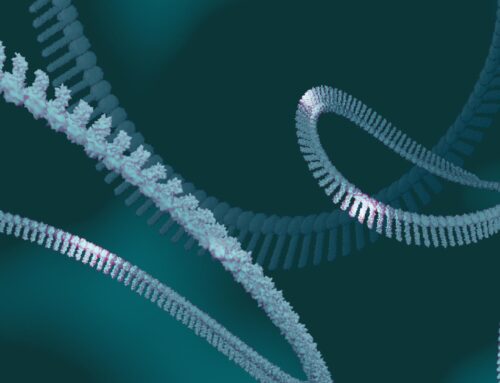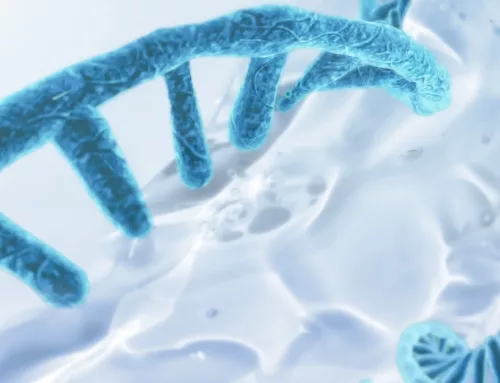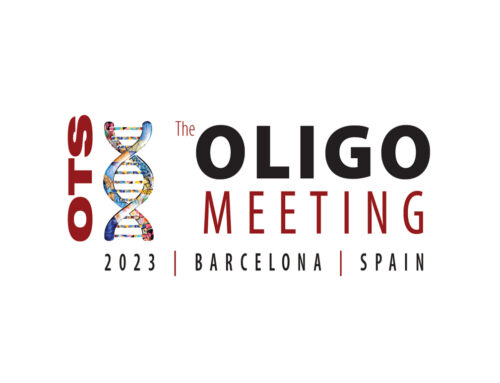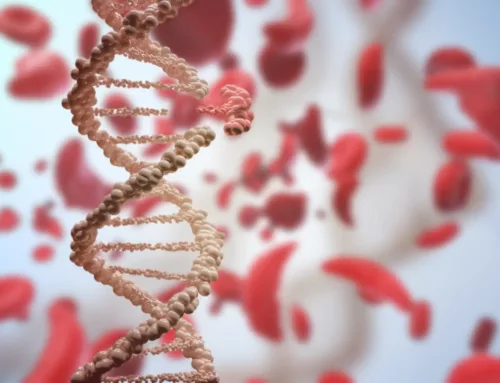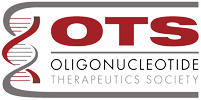Behind the Rapid Development of an Individualized CRISPR Therapy for a Deadly Rare Disease

A baby is the first person to receive a bespoke CRISPR therapy designed specifically for him that directly fixes a disease-causing mutation in his genome. It wasn’t long after KJ was born in the summer of 2024 that doctors noticed something was wrong. Within 48 hours, he was lethargic and struggled to breathe, prompting doctors to run a blood test. They found his blood ammonia levels far exceeded the normal range and soon diagnosed him with carbamoyl-phosphate synthetase 1 (CPS1) deficiency.
CPS1 is an ultra-rare inherited metabolic error that affects the urea cycle and impacts approximately 1 in 1,300,000 individuals (1). Only half of those born with the disorder will make it past early infancy. While liver transplantation is the only long-term solution to the deficiency, it is a risky procedure for infants with the potential to cause hyperammonemia crises and irreversible brain damage (1). Individuals with the disease either partially or completely lack the carbamoyl phosphate synthetase (CPS) enzyme, which is necessary for breaking down and removing nitrogen from the body. Without the enzyme, nitrogen accumulates in the blood as ammonia, and if untreated, it can put the child at risk of developmental delays and even death. Children with CPS1 may show symptoms that include vomiting, a refusal to eat, progressive lethargy, and coma. As nitrogen is a waste product of protein metabolism, patients must avoid eating protein. In the most severe cases of the disease, like KJ’s, the disease begins presenting almost immediately after birth, regardless of dietary protein exposure.
As soon as KJ was born, the clock was ticking, said cardiologist and Verve Therapeutics co-founder Kiran Musunuru, who was on the team of collaborators working on creating a therapy. KJ’s mother, Nicole Muldoon, said he wouldn’t have made it to day five if a doctor hadn’t noticed something was wrong right away.
After receiving the diagnosis, KJ was quickly started on renal replacement therapy, and doctors ran a rapid, targeted analysis of his genome, revealing that he had two CPS1 variants: Q335X and E714X (1).
Creating the bespoke therapy
As KJ stayed in the hospital, his vast medical team, led by pediatrician and metabolic disease expert Rebecca Ahrens-Nicklas and Musunuru, began the process of developing a base-editing therapy designed specifically for his genetic sequence, the results of which were recently published in The New England Journal of Medicine.
While KJ inherited two gene variants contributing to his disease, the researchers chose to focus on the Q335X variant because it has almost no chance of making any CPS1 enzyme and, therefore, does not clear ammonia from the body.
Ideally, researchers would use human hepatocytes with the Q335X variant. However, they were unavailable, so a cultured human HuH-7 cell line was used as a proxy instead. One month after KJ was born, the team successfully used a lentiviral vector to deliver a piece of DNA into the HuH-7 cells, thereby incorporating the DNA into the cells’ genomes (1).
To create the bespoke gene editor, the researchers started by screening various adenine base editors (ABE) with guide RNAs (gRNAs) targeting the site of the Q335X variant in the lentivirus-transduced HuH-7 cells. Two months after KJ’s birth, a suitable ABE with a preference for NGC protospacer-adjacent motifs, along with a gRNA with the target Q335X adenine in the eighth position of its protospacer sequence, was found to be the most efficient and precise base-editing approach.
The team developed the base-editing therapy, which is delivered in vivo via lipid nanoparticles to hepatocytes. The study explains that lipid nanoparticle delivery was chosen due to the potential for re-administration, which is contraindicated with adeno-associated virus-delivered therapies (1).
Honoring their young patient, the gRNA used in the lipid nanoparticle therapy was dubbed “kayjayguran,” the messenger RNA (mRNA) encoding the ABE “abengcemeran,” and the treatment was named “k-abe.”
Following the initial regulatory FDA review, the team of researchers then manufactured a toxicology batch of k-abe and began testing it on monkeys to assess the safety of a single dose (1). In the monkeys, the therapy was delivered intravenously, and no clinical signs of toxic effects were observed two weeks after treatment. Plasma lipid levels had decreased by more than 99.5% from the peak levels, supporting the re-administration of the therapy at intervals greater than two weeks. To test the in vivo editing efficiency of k-abe, the team then performed a limited dose-response study on mice, and saw up to 42% whole-liver corrective editing and the expected synonymous bystander editing. As editing was seen at the lowest dose of 0.1 mg per kilogram, this was supported as the initial clinical dose (1).
Then, a dose-response potency assessment was performed in lentivirus-transduced HuH-7 cells, and lentivirus-transduced HuH-7 cells and primary human hepatocytes from three donors were exposed to a supersaturating dose of k-abe. Low-level synonymous bystander editing was evident in all four cell lots, and a low level of off-target editing was seen in the HuH-7 cells but not in the three primary human hepatocyte lots. However, “subsequent analysis of a larger set of nominated off-target sites detected no off-target editing in the treated primary human hepatocytes” (1).
As KJ’s team worked to create his therapy, the infant was weaned from continuous renal replacement therapy and transitioned to long-term therapy that included nitrogen-scavenger medication, citrulline supplementation, and a protein-restricted diet (1). From days 50 to 100, KJ experienced a “honeymoon” period, but afterward, he worsened, causing an increased reduction in protein intake and an increase in his medication to help manage his elevated ammonia and glutamine levels. As KJ’s ammonia levels spiked, so did his risk of permanent neurological damage and death. At five months, his condition was so dire that he was listed for liver transplantation (1).
Because KJ’s condition was rapidly worsening, the FDA approved his experimental treatment plan after only one week of review once the Investigational New Drug application was submitted. Before KJ’s first dose, he was started on drugs to prevent an immune response to the full-length CPS1 protein. A few days later, on day 208 of KJ’s life, he received his first low-dose (0.1 mg total RNA per kilogram) intravenous infusion of k-abe. Following this treatment, KJ’s dietary protein intake was increased. While he did experience and recover from a viral respiratory infection following his first dose, this was without any associated hyperammonemic crisis. The researchers did note that they were unable to wean him off the nitrogen-scavenger medication, noting that after reducing his dose from 10.1 ml to 8.1 ml, it was restored to its original dose due to rising glutamine levels (1).
“Given the incomplete biochemical correction in the patient — and according to the clinical protocol — he received a second dose of k-abe (0.3 mg per kilogram) 22 days after receipt of the first k-abe infusion,” the study states (1).
A few days after KJ’s second dose, which was moderately higher than his first, he experienced a short-lived increase in his alanine aminotransferase and aspartate amino-transferase levels, which also recurred a few weeks later during a viral infection. However, two weeks after his second infusion, doctors were able to reduce his nitrogen-scavenger medication levels to half the starting dose without any unacceptable adverse effects (1). The researchers stated that the patient could receive additional, higher doses of k-abe in the future if needed (1).
The bespoke therapy was developed over six months and demonstrates the possibility of creating other treatments similar to k-abe, which could be developed for hundreds of hepatic inborn errors of metabolism, the researchers stated.
“Similar to antisense oligonucleotide therapy, corrective gene editing lends itself to rapid customization for individual patients owing to the platform nature of the technology,” the study explained. “Shared components among gene-editing therapies could include the same lipid nanoparticle formulation and mRNA, with the gRNA customized to each patient’s variant.”
The potential of CRISPR to treat rare diseases
While rare diseases are, by definition, uncommon, there are still more than 7000 affecting around 263-446 million people worldwide (2). Most rare diseases are inherited and often emerge during childhood. Typically, patients experience a reduced quality of life and lack effective treatment options (2). However, CRISPR-based techniques have expanded the possibilities for treating rare diseases.
“Compared to the previously approved therapies for rare diseases that relieve the symptoms using chemical agents, gene therapy targets the essential causes of rare diseases and provides optimized disease prognosis,” stated a 2022 journal article published in Life (2).
While dozens of people have received CRISPR-based therapies for genetic diseases like sickle-cell anemia, those treatments were created for many people with the same condition, regardless of the underlying mutation that caused it. KJ’s therapy, in contrast, has been designed specifically for his genome.
Musunuru believes that gene editing therapies will eventually become as routine as antibiotics or blood pressure medications, and he expects them to become cheaper over time. Over the years, he has developed liver-targeting gene therapies that lower cholesterol and reduce the risk of heart disease. However, in 2021, Musunuru started exploring the use of the liver-targeting method for other genetically caused diseases and reached out to Ahrens-Nicklas. Two years ago, the pair began creating a process to edit extremely rare mutations that cause serious urea cycle diseases, including CPS1 deficiency. Although they created KJ’s therapy within months, Musunuru aims to reduce the process to weeks, given the importance of time in treating serious diseases.
However, not all children born with rare diseases receive the same level of attention. Three-year-old Lucy Landman was born with a rare genetic condition called PGAP3-CDG that causes severe intellectual disability, weak muscles, seizures, and sometimes autism.
“She’s expected to, you know, very much never be able to live independently, likely never be potty trained, likely never speak,” said her mom, Geri Landman. “Lucy walks like she’s drunk most of the time. It’s hard to watch your child suffer. And Lucy does, some days, suffer a lot.”
Currently, there is no treatment for PGAP3-CDG3, which affects only a handful of children worldwide. While CRISPR could potentially change Lucy’s condition, Geri said the disorder affects too few people to attract the millions of dollars needed to find out. However, when Geri bumped into Fyodor Urnov at a farmers market, things began to change. Urnov works at the University of California, Berkley, with Jennifer Doudna, one of the scientists who discovered CRISPR.
“The for-profit sector is focusing on conditions such as sickle-cell disease, such as cancer, which are commercially viable because there are just enough people with them,” Urnov explained in an interview. “And that leaves, frankly, you know, 99.5% of folks outside of the big building that says come here, be healed by CRISPR, because the commercial viability is not there, even though the technical feasibility is right in our hands.”
However, Urnov and other scientists are working to create a template for groups of similar rare diseases, with the goal of allowing a CRISPR treatment to be easily adapted from one disease to another. Urnov has begun to edit some of Lucy’s cells in his lab to demonstrate that CRISPR could help her and other patients with similar mutations.
The next step in KJ’s treatment journey
When KJ was diagnosed last year, doctors cautioned his parents that they may have to look into end-of-life, palliative care. Now, KJ will be turning ten months old this summer, and while he’s doing much better — he’s now sitting up on his own, waving, and rolling over — Ahrens-Nicklas said they’re still in the early stages of understanding what the k-abe therapy has done for him.
“But every day, he’s showing us signs that he’s growing and thriving,” she added.
KJ will likely live with a milder form of his disease, and his team will continue to monitor his development and ability to eat protein so they can reduce his medications, but he’s now being prepared for the exciting next step of going home — a place he’s never been since being born.
The swift development of a bespoke therapy for KJ’s carbamoyl-phosphate synthetase 1 deficiency demonstrates the potential of gene-editing therapies in providing long-term solutions for those with rare diseases. Although the rare disease umbrella term means fewer people are affected by a specific condition, in total, these diseases still affect millions, often young individuals, worldwide. While cost and resources are challenges, the collaboration, research, compassion, and technology are present and working toward a future where CRISPR could be a more inclusive treatment option.
References:
- Musunuru K, Grandinette SA, Wang X, Hudson TR, Briseno K, Berry AM, Hacker JL, Hsu A, Silverstein RA, Hille LT, Ogul AN, Robinson-Garvin NA, Small JC, McCague S, Burke SM, Wright CM, Bick S, Indurthi V, Sharma S, Jepperson M, Vakulskas CA, Collingwood M, Keogh K, Jacobi A, Sturgeon M, Brommel C, Schmaljohn E, Kurgan G, Osborne T, Zhang H, Kinney K, Rettig G, Barbosa CJ, Semple SC, Tam YK, Lutz C, George LA, Kleinstiver BP, Liu DR, Ng K, Kassim SH, Giannikopoulos P, Alameh MG, Urnov FD, Ahrens-Nicklas RC. Patient-Specific In Vivo Gene Editing to Treat a Rare Genetic Disease. N Engl J Med. 2025 Jun 12;392(22):2235-2243. doi: 10.1056/NEJMoa2504747. Epub 2025 May 15. PMID: 40373211.
- Li Q, Gao Y, Wang H. CRISPR-Based Tools for Fighting Rare Diseases. Life (Basel). 2022 Nov 24;12(12):1968. doi: 10.3390/life12121968. PMID: 36556333; PMCID: PMC9787644.



